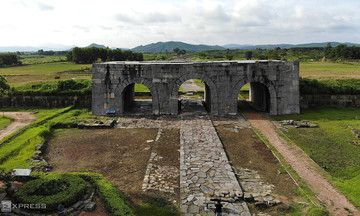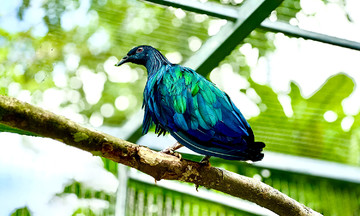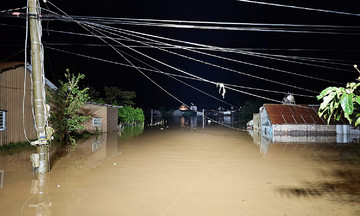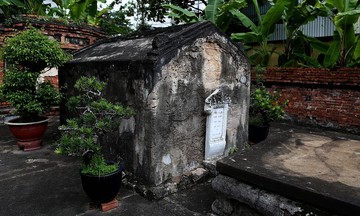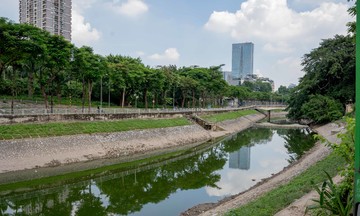 |
Cha Lo International Border Gate station troops deliver flooring materials to residents of Ka Ai village. (Photo provided) |
Ka Ai village, in Dan Hoa commune, is home to 142 households from the Chut, Bru-Van Kieu, and May ethnic groups. The village sits on a flat piece of land at the source of the Gianh River, backed by mountains and fronted by rice paddies that curve along a stream.
Previously, residents lived in dilapidated temporary shelters made of wood planks, bamboo, and leaf or fiber-cement roofs. Now, interspersed with the old structures, are new houses built with concrete pillars, metal roofs, and yellow-painted walls. Many new foundations have been leveled and concrete pillars erected.
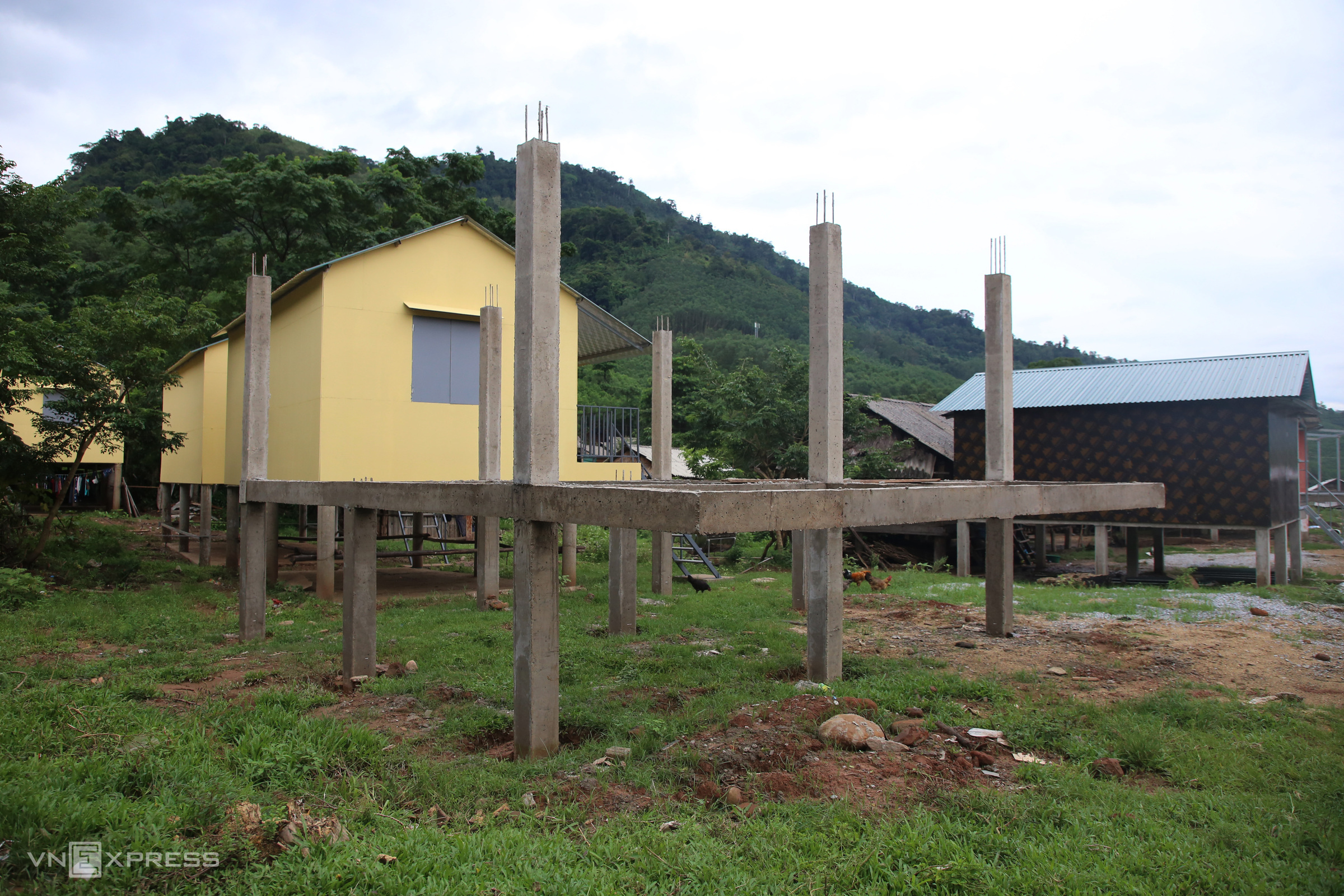 |
After almost 3 months of work, many houses in Ka Ai village are complete. "The wooden house the government helped build almost 15 years ago has deteriorated. The new house is finished, and I'm waiting for the handover to move in," said Ho Ton. (Photo provided) |
The houses are designed with reinforced concrete pillar frames, cemboard walls, and metal roofs. The completed new homes meet the "3-hard" standard (hard foundation, hard frame/walls, hard roof), ensuring stability, safety, and aesthetic appeal, while also respecting the communities' customs.
As part of the program to eliminate dilapidated housing, the Quang Tri Province Border Guard has been tasked with building 256 houses for ethnic minorities in Dan Hoa, Truong Son, and Kim Ngan communes, all bordering Laos.
Total construction support exceeds 26 billion VND, sourced from the National Target Program and social contributions mobilized by the provincial Vietnam Fatherland Front Committee. The province has already inaugurated and handed over 100 houses in Truong Son commune, each valued at 120 million VND.
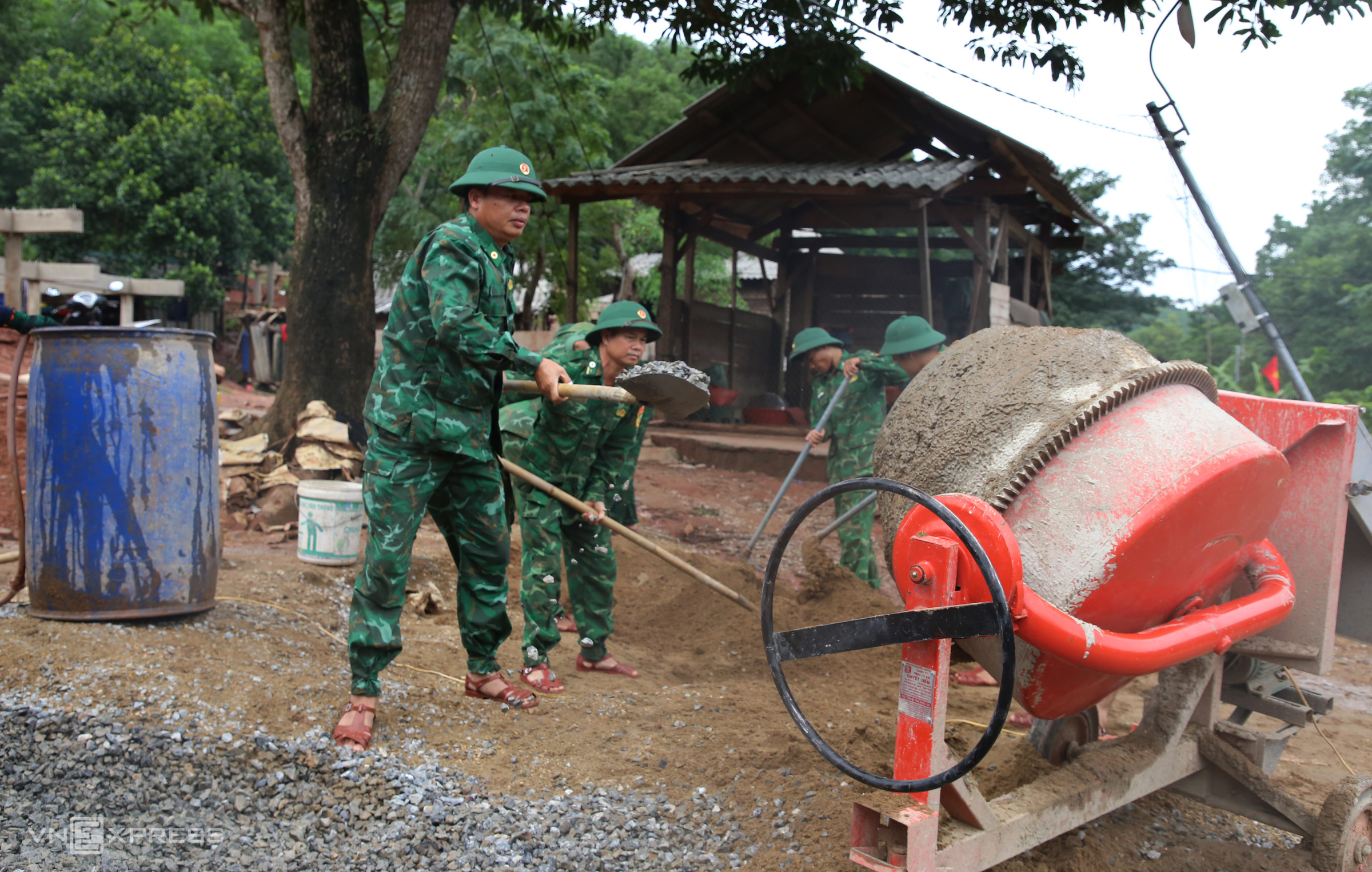 |
While her new house is being built on the site of her old one, Ho Thi Han, her husband, and their four children are living in a temporary shelter. "The frame of the new house is finished. In about 10 days, my family will have a new home," she said. (Photo provided) |
Officers and soldiers from the Cha Lo International Border Gate station are working with contractors to expedite construction and handover before the rainy season. The troops are assisting residents with site clearance, material transportation, and concrete mixing.
In Ka Ai village, the Cha Lo International Border Gate station is constructing 92 houses for impoverished households, including 77 stilt houses and 15 ground-level houses, each valued at 90 million VND. Many are awaiting handover, while others are nearing completion.
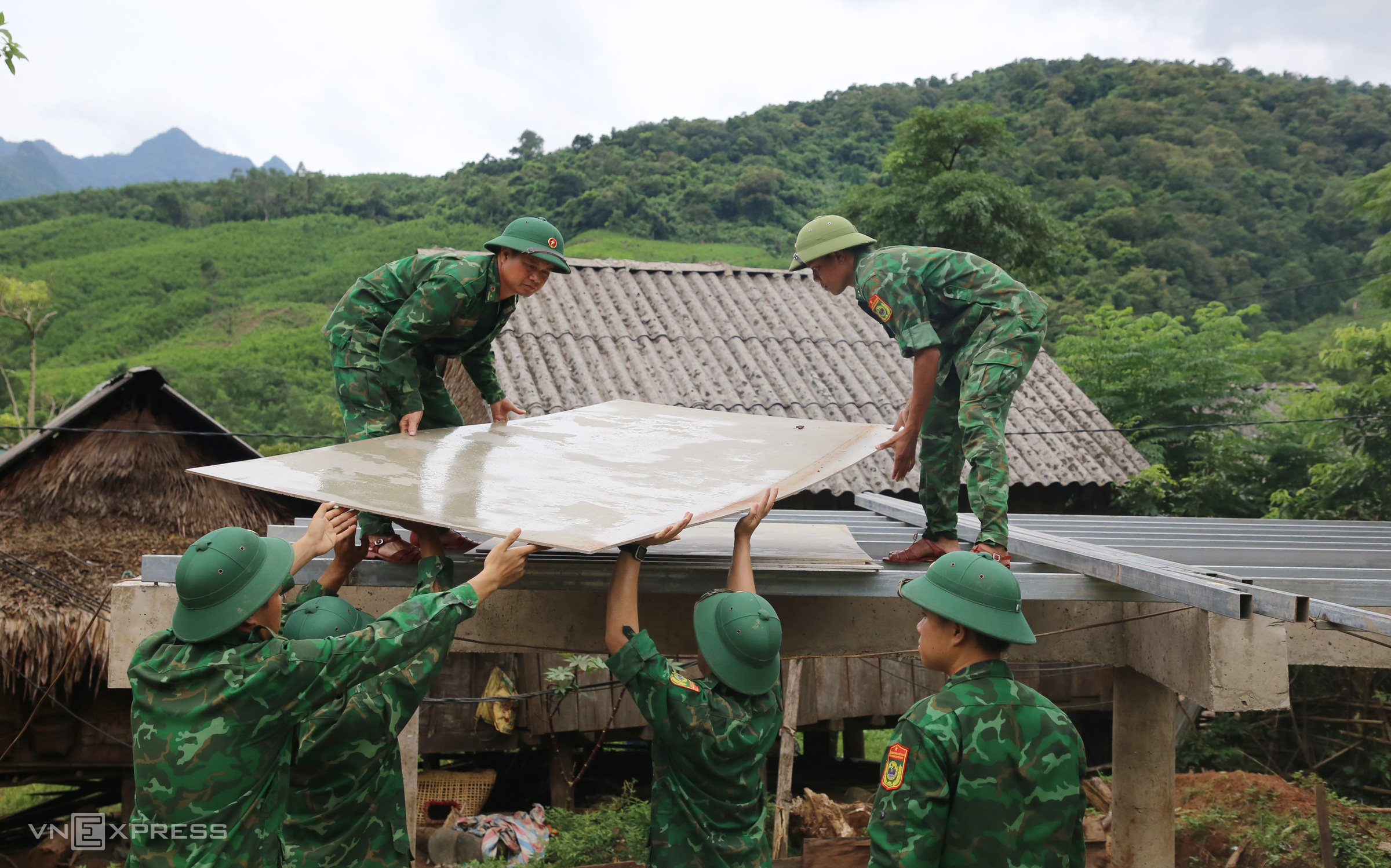 |
Ho Thi Sau, a widowed mother of two and classified as impoverished, previously lived in a temporary shelter. She now has a new house. "The house is finished, and I'm waiting for the handover to move in," she shared. (Photo provided) |
Cha Lo International Border Gate station troops deliver flooring materials to residents of Ka Ai village. (Photo provided)
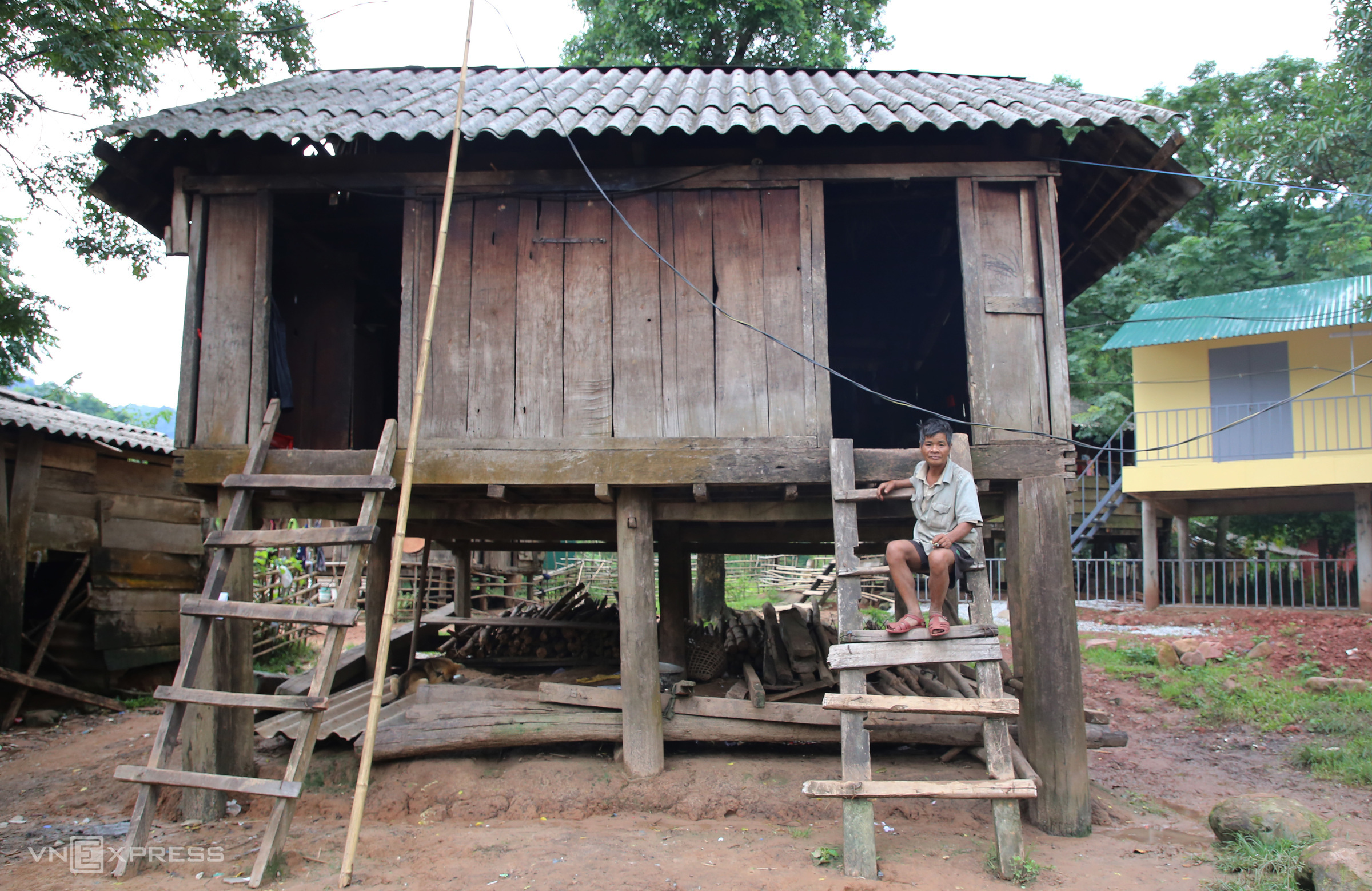 |
A completed ground-level house. Like the stilt houses, it measures 30 square meters and features non-fired brick walls and a metal roof. (Photo provided) |
After almost 3 months of work, many houses in Ka Ai village are complete. "The wooden house the government helped build almost 15 years ago has deteriorated. The new house is finished, and I'm waiting for the handover to move in," said Ho Ton. (Photo provided)
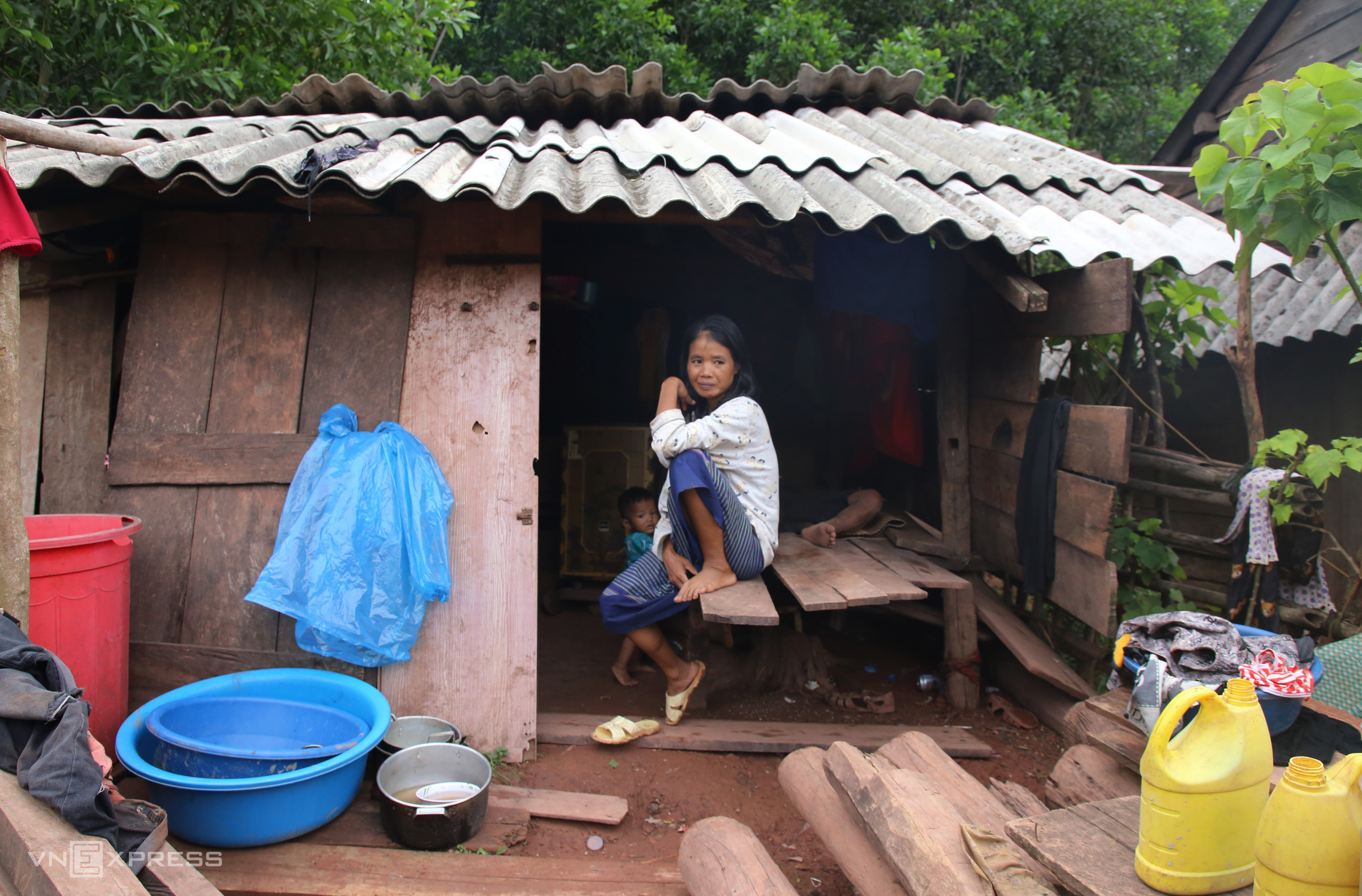 |
Ho Thi Sau, from Ka Ai village, received support to build a Great Unity House, constructed by the commune authorities next to her dilapidated old house. Despite having a new home, she has kept the old one for storing grain. (Photo provided) |
While her new house is being built on the site of her old one, Ho Thi Han, her husband, and their four children are living in a temporary shelter. "The frame of the new house is finished. In about 10 days, my family will have a new home," she said. (Photo provided)
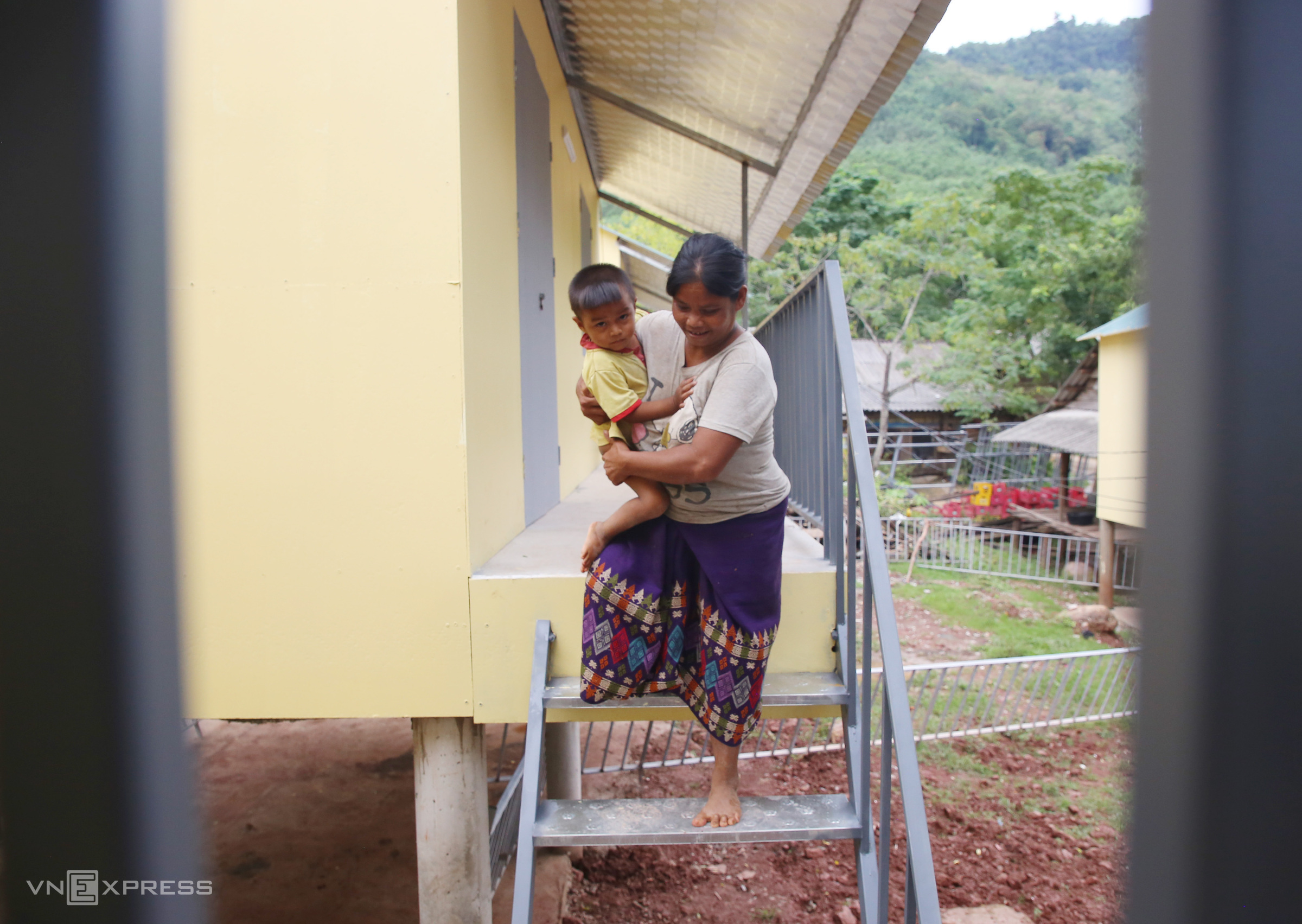 |
Ho Thi Sau, a widowed mother of two and classified as impoverished, previously lived in a temporary shelter. She now has a new house. "The house is finished, and I'm waiting for the handover to move in," she shared. (Photo provided)
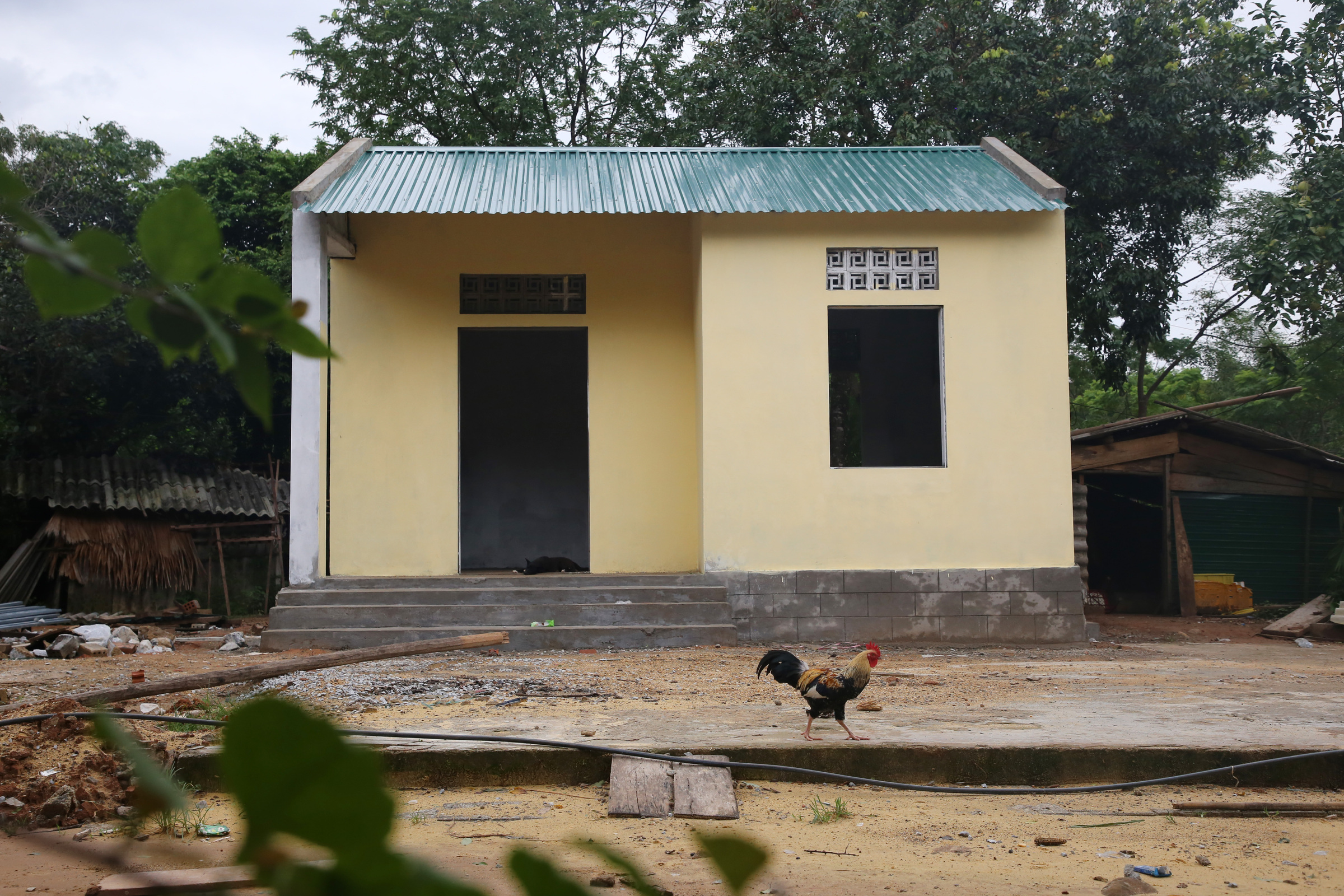 |
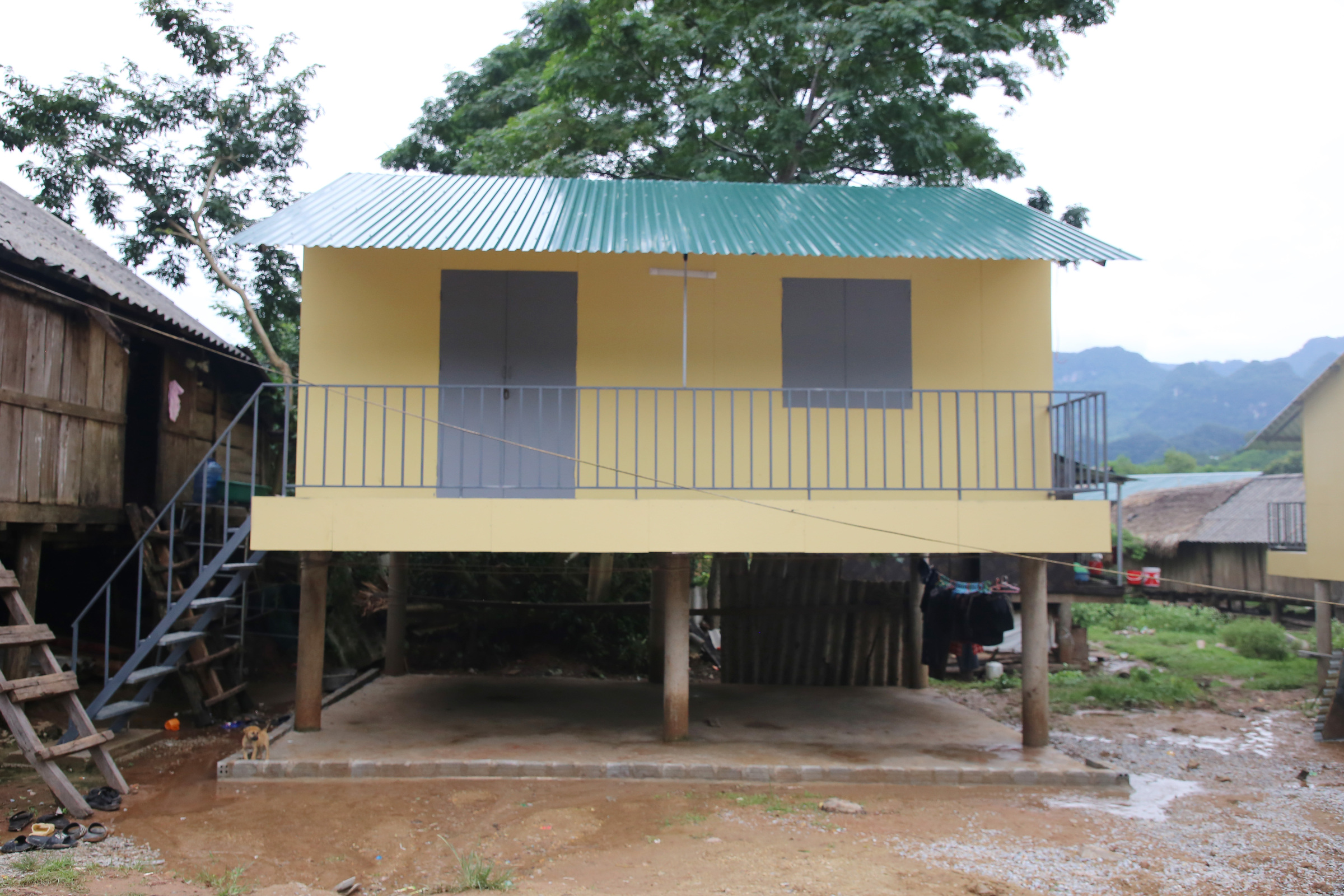 |
A completed ground-level house. Like the stilt houses, it measures 30 square meters and features non-fired brick walls and a metal roof. (Photo provided)
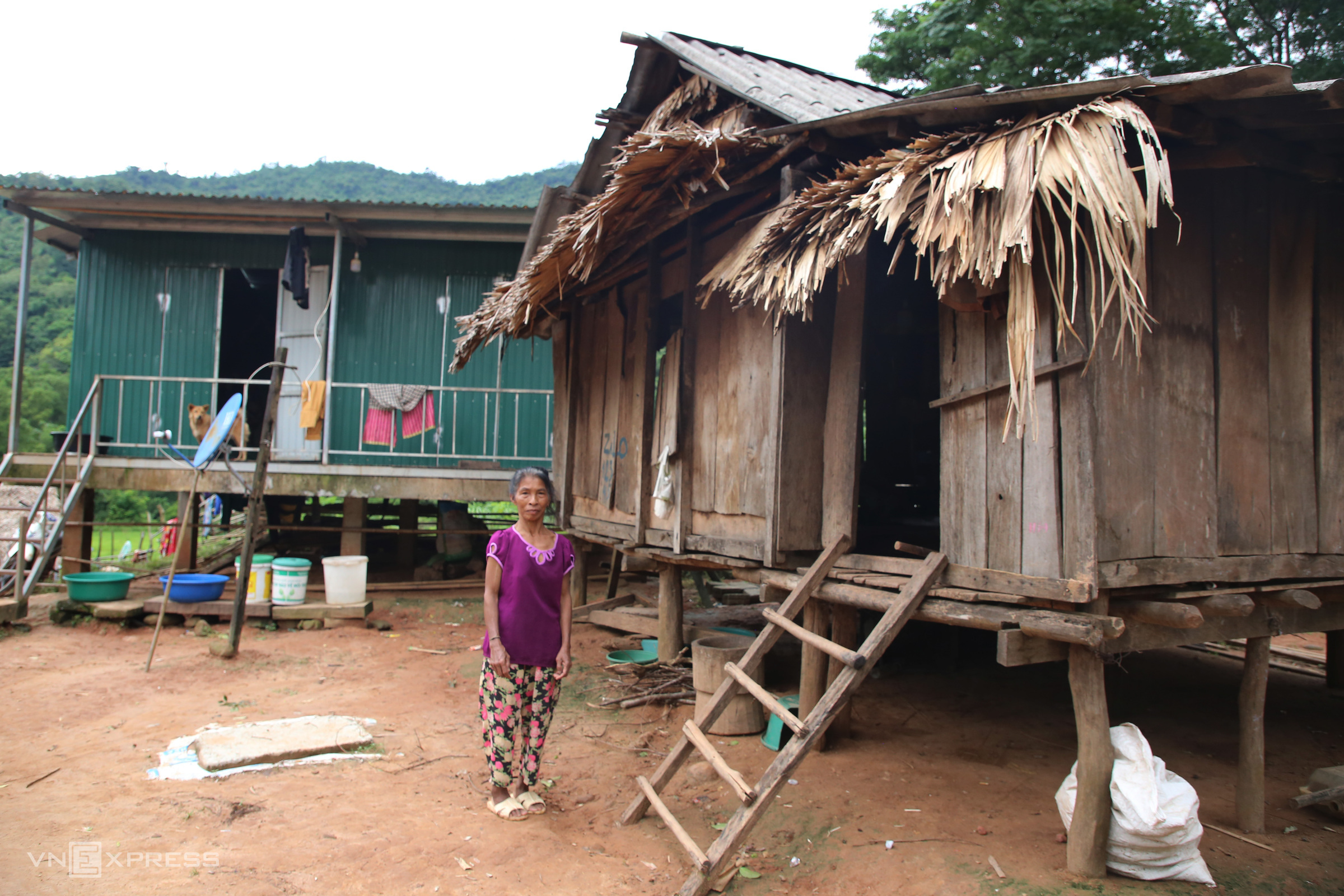 |
Ho Thi Sau, from Ka Ai village, received support to build a Great Unity House, constructed by the commune authorities next to her dilapidated old house. Despite having a new home, she has kept the old one for storing grain. (Photo provided)
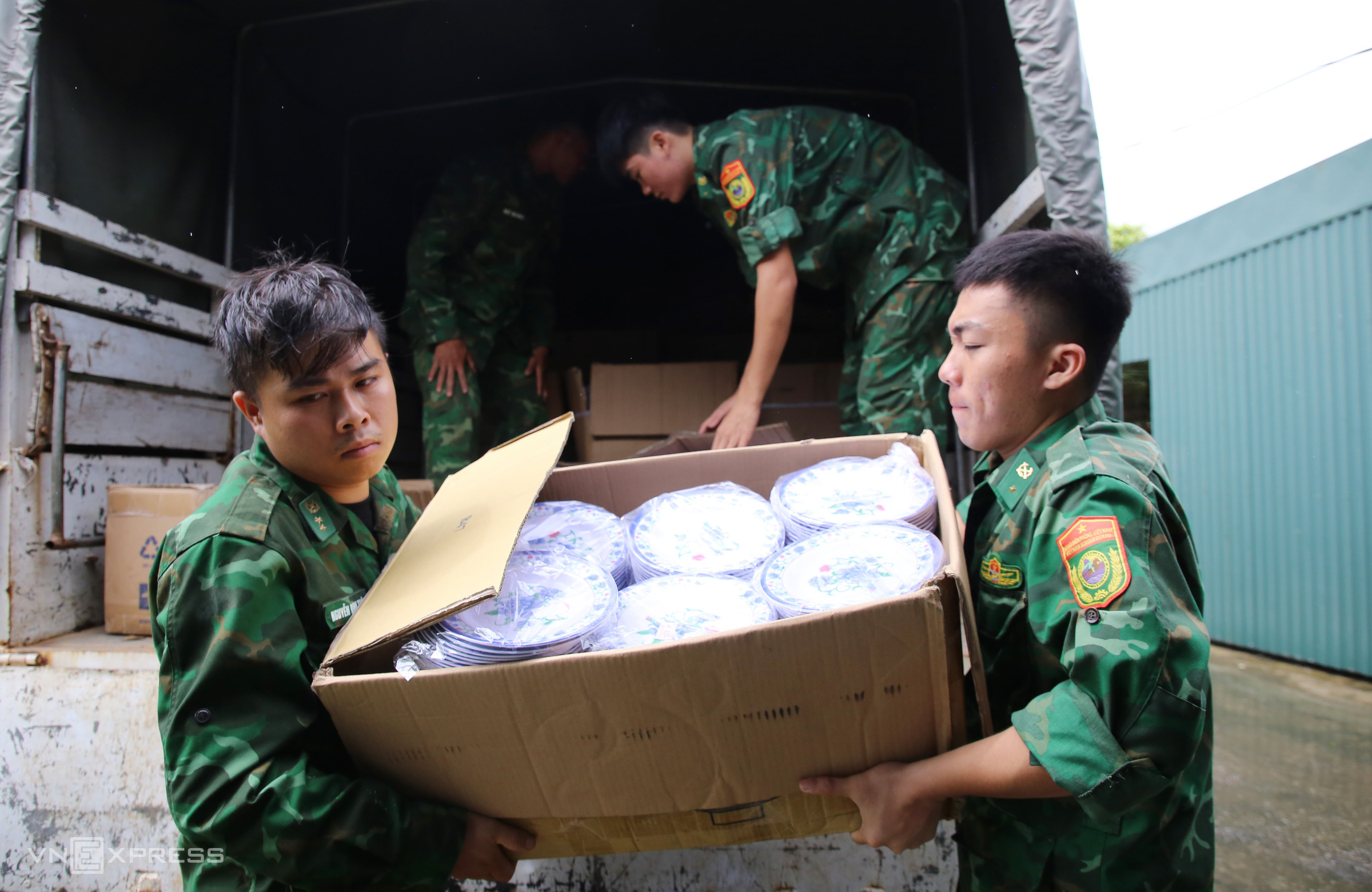 |
In addition to construction support, the Border Guard has also provided essential household items like stoves, pots, basins, and bowls to 256 households, totaling 256 million VND. These items are being stored at the station for distribution during the house handovers.
The Quang Tri Province Border Guard Command reported that over the past three months, border stations along the two border lines have supported the construction and renovation of 450 houses as part of the program to eliminate dilapidated housing. More than 1,200 officers and soldiers have participated, contributing 2,630 working days.
The Border Guard has mobilized 75 vehicles for transporting materials and has also sought social contributions, combining these resources with the unit's own funds to provide additional financial and material support of 2 to 5 million VND per household, totaling over 1.2 billion VND.
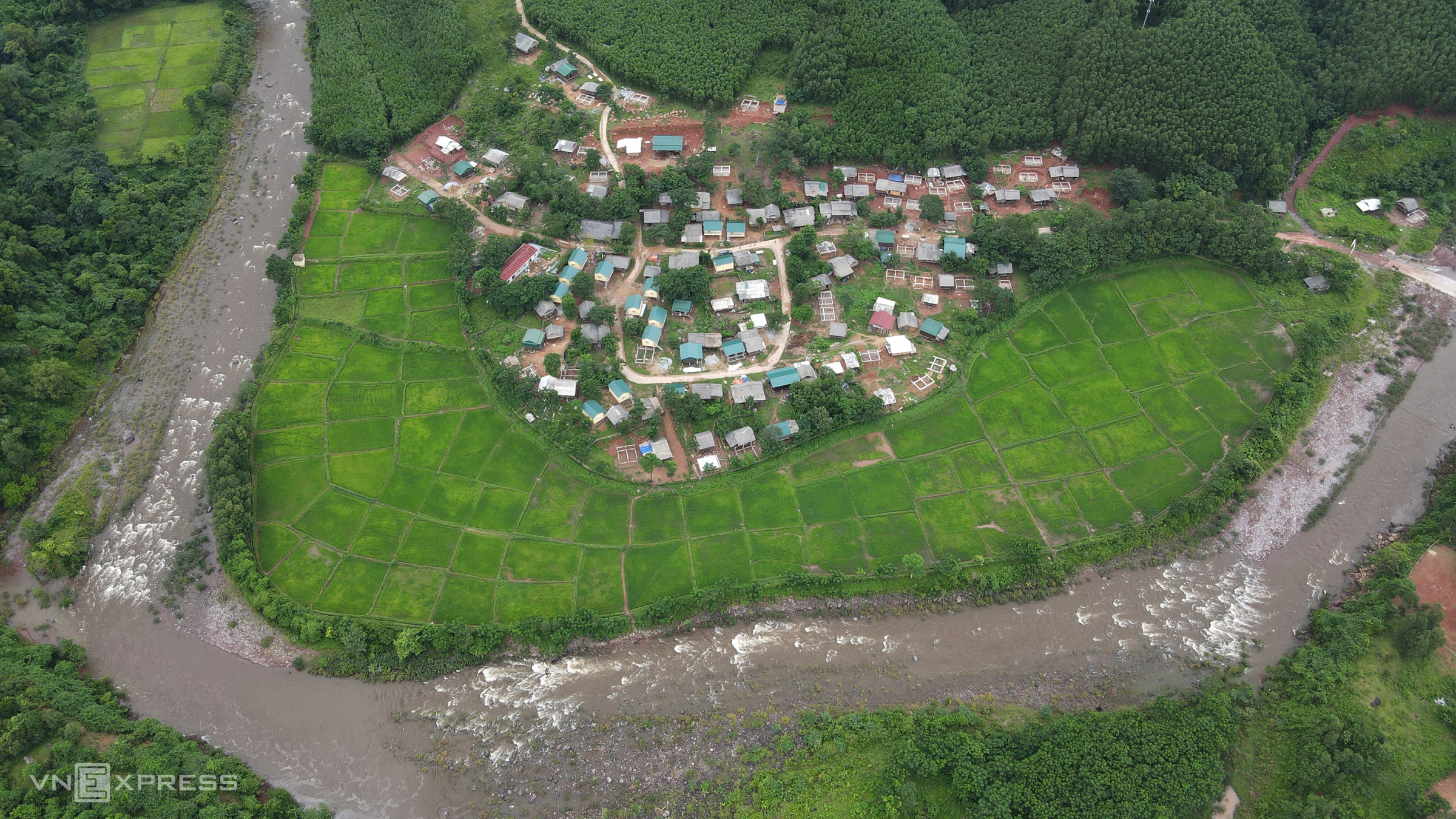 |
New houses with green tile roofs are gradually covering Ka Ai village.
Under the program to eradicate dilapidated housing, Quang Tri province is supporting the construction of 14,994 houses, including 8,681 new constructions and 6,313 renovations. The program targets three main groups: 5,438 houses for impoverished and near-poor households; 4,906 houses for people with meritorious service to the revolution and relatives of martyrs; and 3,813 new houses for impoverished households in ethnic minority and mountainous areas.
Dac Thanh




